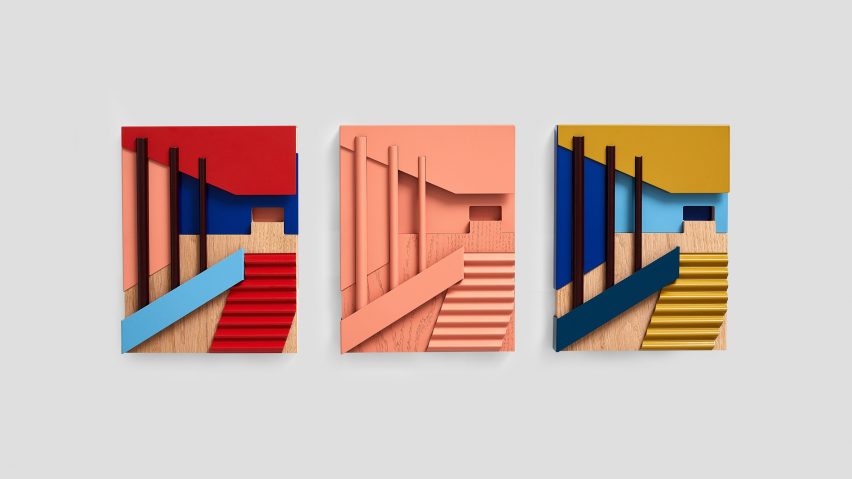
Emily Forgot uses furniture-making processes for architectural wall art
Artist and illustrator Emily Forgot collaborated with British furniture brand Very Good & Proper on this series of multimedia artworks that draw inspiration from the architecture of post-war schools.
Emily Alston, who works under the moniker Emily Forgot, created the Assembly series to mark the tenth anniversary of the London-based furniture producer Very Good & Proper.
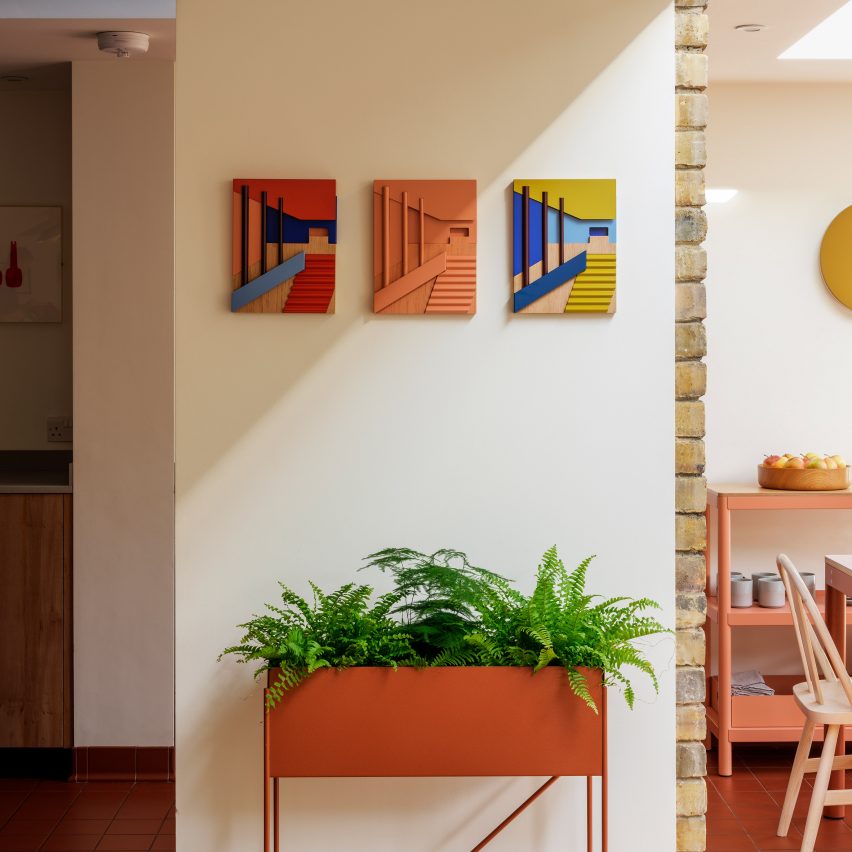
The three wall-mounted artworks are an extension of Emily Forgot's wooden, architectural "assemblages", which she first presented at a solo show called Neverland during the 2016 London Design Festival.
Made from powder-coated aluminium and oak, the limited-edition pieces were developed collaboratively to reflect the processes, techniques and materials used to produce Very Good & Proper's furniture.
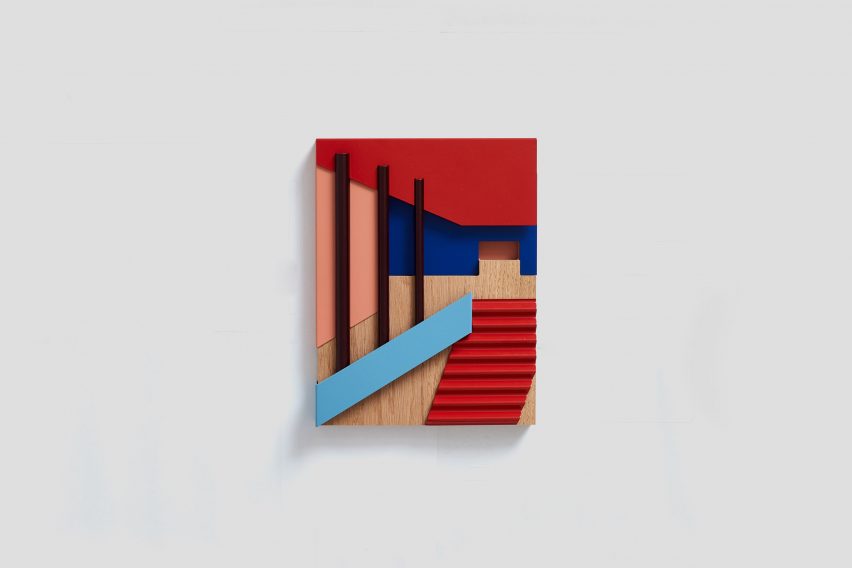
The starting point for the project was the brand's Canteen chair, which was the first product developed by Very Good & Proper cofounders Ed Carpenter and André Klauser in 2009.
The chair draws on classic post-war British school chairs, and features a powder-coated tubular steel frame combine with a plywood seat and back.
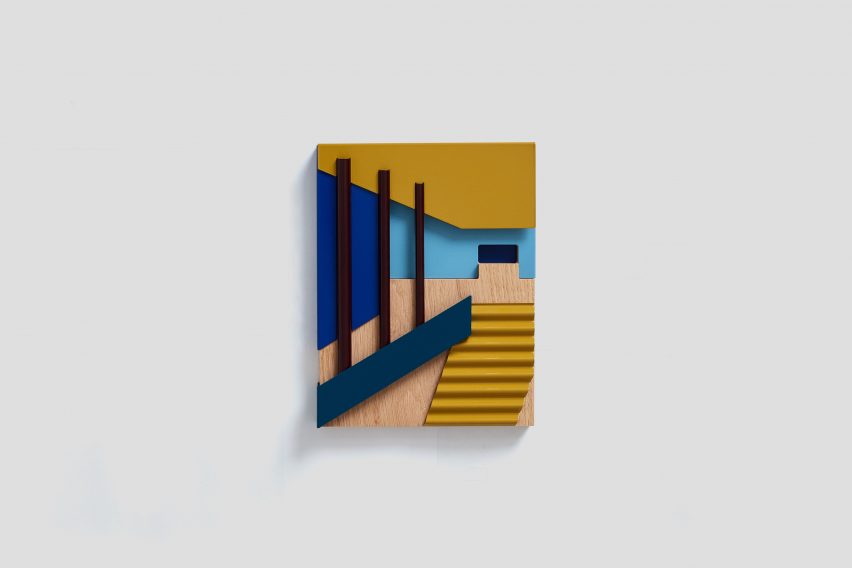
"After reading about the inspiration for the Canteen chair I did some research into postwar schools and began sketching scenes to form the basis for the work," Alston told Dezeen.
"In the end, I based the piece on an image I found in the Design Council archive from 1951 of a classroom block in Stevenage by Architect F R S Yorke."
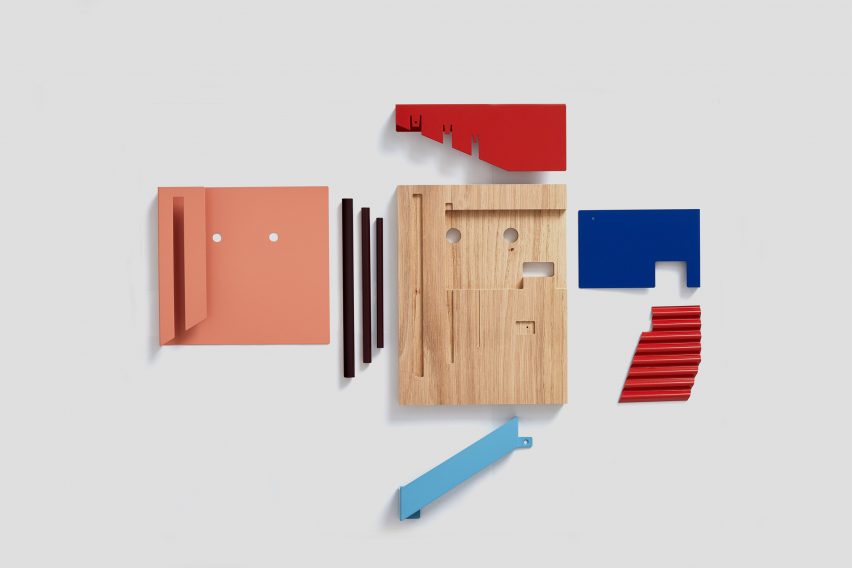
The design was refined through a series of meetings with Very Good & Proper, which helped to determine the final form and material palette. The three-dimensional compositions combine corrugated and bent metal with tubes and wooden blocks to represent simplified architectural features.
"It was interesting using their processes to make an artwork because I’m generally quite limited by my own capabilities in terms of what I can make," the artist added.
"Usually my work is relief based, but I'd seen that some of their products use bent metal so I thought it would be interesting to introduce depth by bending the material rather than creating blocks like I normally do."
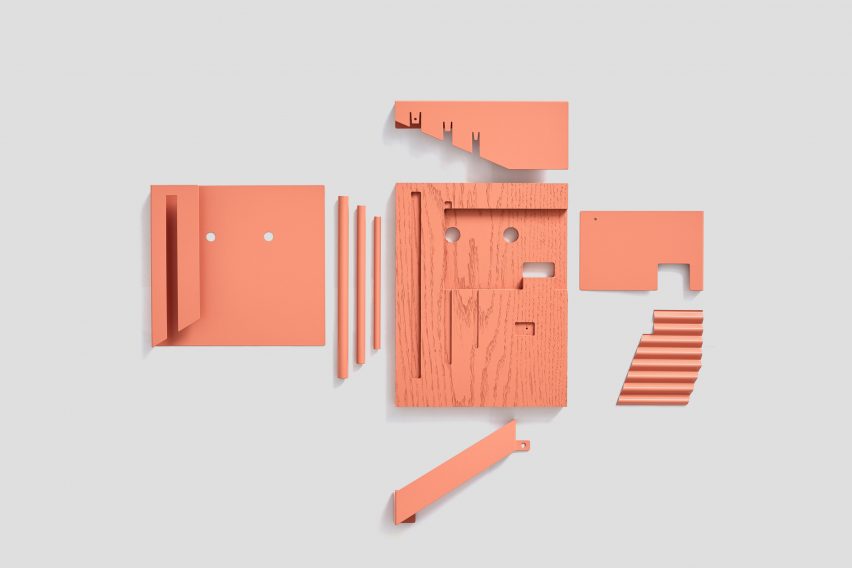
Two of the assemblages feature a limited colour palette that complements the raw oak and is typical of Emily Forgot's artworks. A third, monochrome version in salmon pink focuses attention on the textual qualities of the various surfaces. Each of the three designs is available in a limited edition of 20 pieces.
The Canteen chair was originally designed for its namesake restaurant in London's Baker Street. It has since been used alongside other Very Good & Proper designs in new branches as Canteen expanded into a successful chain.
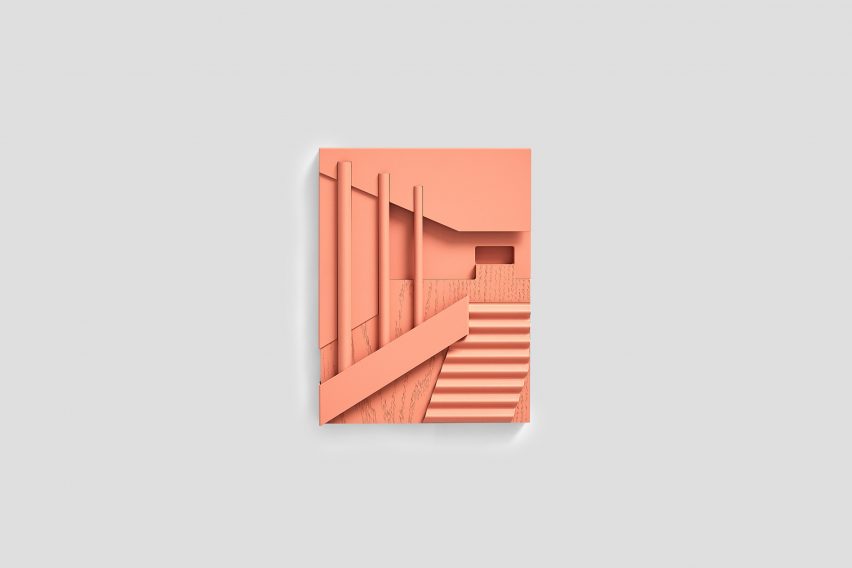
Very Good & Proper has also designed chairs for other restaurants, including an upholstered club chair developed for Merchants Tavern in Shoreditch.
Earlier this year, the company acquired fellow British furniture brand Isokon Plus in a move described as being based on "a shared vision for the future". The brand's product portfolio also includes a wall-mounted shelving system designed by Michael Marriott and a table with a distinctive A-joint leg system.